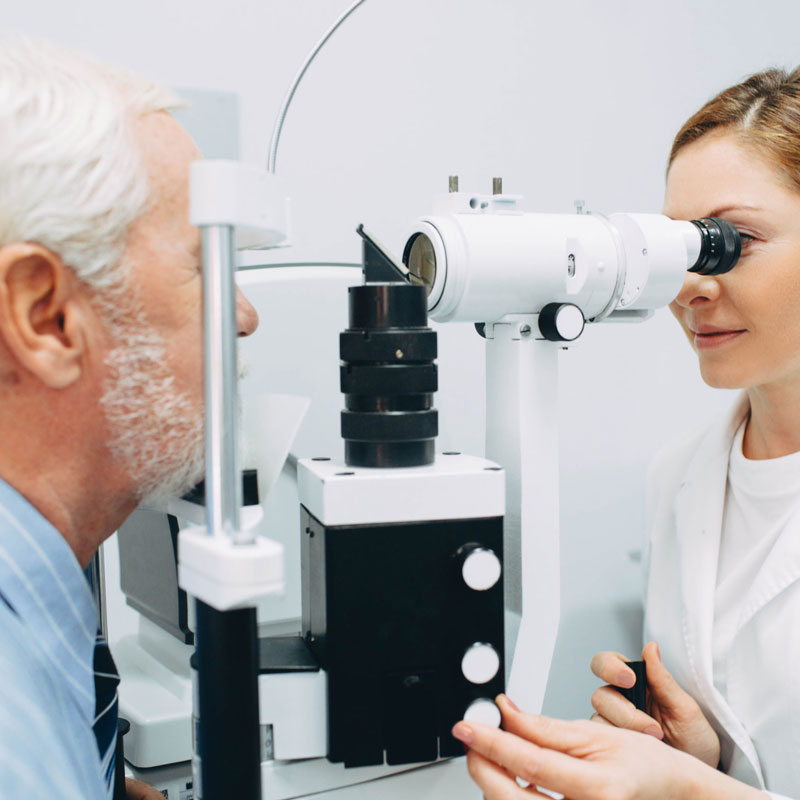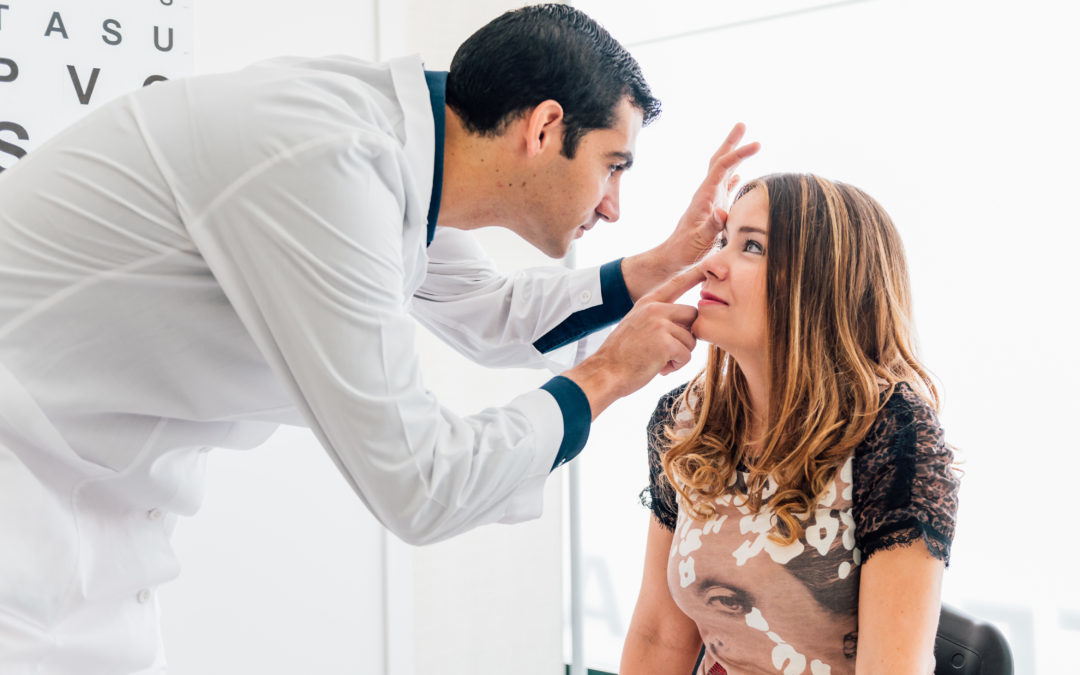Does Type of Diabetes Increase Risk of Diabetic Eye Disease?
Diabetes can put you at risk for diabetic eye diseases like diabetic retinopathy with or without macular edema, early cataracts and even glaucoma in advanced cases. If blood sugar levels are left untreated, unhealthy blood cells can damage the retina, which is the main sensor in the eye that turns what you see into things your brain can understand: this leads to blurry, distorted vision and vision loss.
To preserve clear, healthy vision, it’s important to understand the contributing factors of diabetic eye disease — read below to learn more about how your specific case may increase your risk.
Does Type of Diabetes Affect Risk?
Those with diabetes are equally at risk for diabetic eye disease, regardless of type. That said, it’s important to understand your case, as that will help you manage it, and to regularly get eye exams to track its development, especially if you are prediabetic or at risk.
- Type 1 diabetes typically shows up early in life, many times in childhood, making early diagnosis important.
- Type 2 diabetes develops later in life and there can be a genetic component but it can also be linked to poor dietary habits and obesity.
- Gestational diabetes, which develops during pregnancy, is less common but may require more frequent eye exams. It can resolve after pregnancy but be a sign of future diabetes.

Do Any Aspects of Diabetes Affect Risk?
Your risk for diabetic eye disease increases the longer you have diabetes, as studies prove that half of people with diabetes will develop diabetic retinopathy over time [1]. Your risk also depends on whether you’ve been controlling your diabetes, as more irregular blood sugar means more chances for unhealthy blood vessels to form.
Whether it’s a lack of physical activity or inconsistently taking medication, it doesn’t matter how your blood sugar or insulin levels become irregular, but it’s important to regulate your levels. Although you can’t prevent diabetic eye disease, you can take proactive steps to minimize its impact on your vision health.
How You Can Decrease Your Odds
To get your diabetes under control, it’s essential to maintain healthy blood sugar levels with a balanced diet, exercise, and correct doses of insulin and other diabetic medications. Unmanaged high blood pressure or cholesterol can also increase your risk for diabetic eye disease.
Even if your vision seems normal, it’s important to get a comprehensive eye exam at least once a year. You may not show symptoms for diabetic eye disease, but we may be able to detect early signs. Our team of experts at Buffalo Ophthalmology take the time to get to know you, your eye health, and your medical history to provide diabetic eye disease treatments tailored to your case and needs.


How Buffalo Ophthalmology Can Help
To diagnose diabetic eye disease as early as possible, our doctors start with a dilated eye exam to get a full understanding of your vision health. If an issue is detected, we offer a wide range of treatment options to protect your eyesight, including working with your primary care doctor on blood sugar management plans to prevent further progression. Once disease activity begins affecting vision, we can employ anti-VEGF injections, steroid medications, and laser photocoagulation treatment. Cataracts and secondary glaucoma can be treated by our team as well: however subtle or severe your case is, we can help.
Get a jumpstart on your eye health with a comprehensive eye exam at Buffalo Ophthalmology. Our experienced team provides not only the care you need, but the care you deserve.
Request Appointment
"*" indicates required fields

